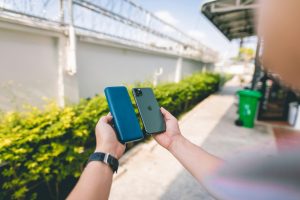Prosthetics and Exoskeletons: AI-Enhanced Mobility Solutions
In the world of technology, advancements are being made every day to enhance the quality of life for individuals with disabilities. One of the most groundbreaking and innovative solutions for improving mobility is the use of prosthetics and exoskeletons. However, with the integration of artificial intelligence (AI), these mobility solutions have seen a significant upgrade in terms of functionality and user experience. In this article, we will explore the exciting world of prosthetics and exoskeletons, and how the integration of AI is providing individuals with disabilities a new sense of independence.
The Evolution of Prosthetics and Exoskeletons
Prosthetics have been around for centuries, but it was not until the industrial revolution that significant advancements were made in this field. With the development of modern materials and technologies, prosthetics saw a shift from being purely functional to also being aesthetically pleasing. From wooden limbs to carbon fiber, prosthetics have evolved into high-tech and customizable solutions.
Similarly, exoskeletons have come a long way from their military origins and are now being used in various industries such as healthcare, construction, and manufacturing. These wearable robots provide external support to the user, increasing strength and endurance, and reducing the risk of injury.
The Role of AI in Prosthetics and Exoskeletons
The integration of AI in prosthetics and exoskeletons has opened up endless possibilities for individuals with disabilities. With machine learning algorithms, these devices can adapt to the user’s movement patterns and provide a more natural and intuitive experience. This has greatly enhanced the comfort and functionality of these mobility solutions.
AI is also being used to analyze data from sensors embedded in these devices. This data can be used to improve the design and performance of future models. It can also help healthcare providers monitor the progress of their patients and tailor treatment plans accordingly.
Impacts on Daily Life
The use of AI in prosthetics and exoskeletons has had a significant impact on the daily lives of individuals with disabilities. With the improved functionality and comfort, users are now able to perform tasks that were once deemed impossible. Whether it is walking, running, or even playing sports, these individuals can now do so with ease and confidence.
In addition, the integration of AI has made these devices more user-friendly, allowing for quick and easy adjustments. This means that users can adapt to different tasks and environments without having to constantly adjust their prosthetics or exoskeletons. This has greatly increased their level of independence and freedom.
The Future of AI-Enhanced Mobility Solutions
As technology continues to evolve, we can expect to see even more advancements in AI-enhanced prosthetics and exoskeletons. Researchers are currently working on expanding the capabilities of these devices, such as integrating sensors that can detect changes in temperature, pressure, and humidity.
Furthermore, there is also ongoing research on the development of brain-controlled prosthetics and exoskeletons. This technology will enable users to control the movement of the device using their thoughts, providing a more seamless and natural experience.
In Conclusion
The integration of AI in prosthetics and exoskeletons has revolutionized the field of mobility solutions. With improved functionality, comfort, and user experience, individuals with disabilities now have access to a whole new world of possibilities. As technology continues to advance, we can expect to see even more innovative solutions that will continue to enhance the quality of life for those in need of these devices.
References:
1. “The Evolution of Prosthetics” The Open Artificial Intelligence Journal, Vol. 1, 2007.
2. “Exoskeletons in Rehabilitation Robotics: A Survey of Technologies and an Introduction to the Associated Ethical Challenges” Advances in Mechanical Engineering, 2017.






